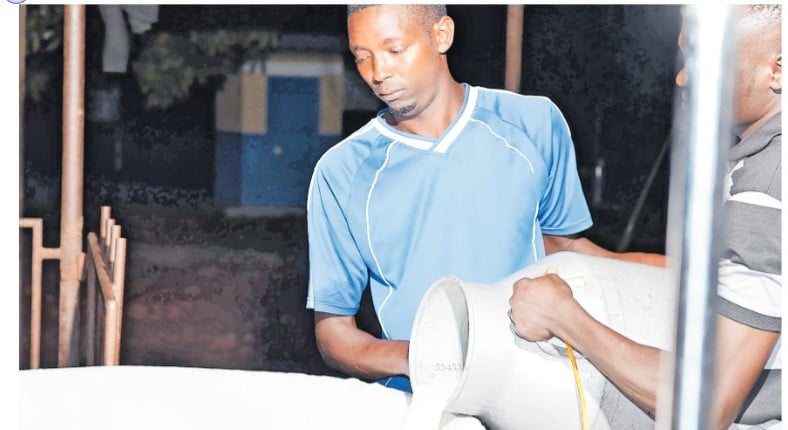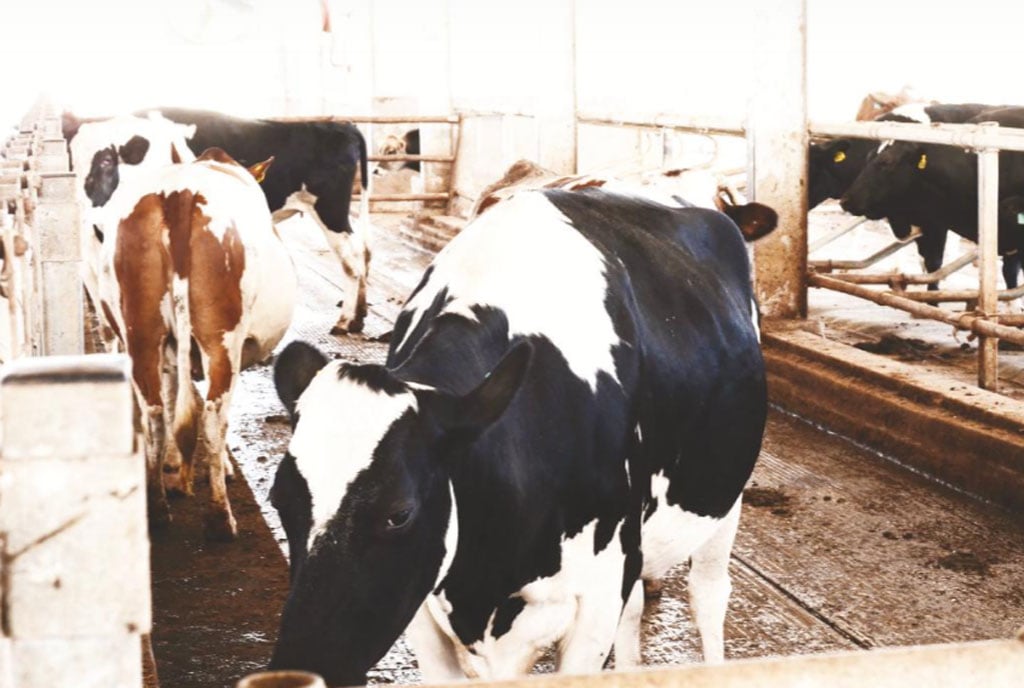Prime
Solar energy: Dairy farmers’ lifeline

By adopt ing solar-powered solutions, farmers can enhance their productivity, reduce environmental impact, and build resilience against climate change
What you need to know:
- Solar energy is emerging as a powerful tool to address climate change and improve the livelihoods of dairy farmers in the Cattle Corridor.
- By adopting solar-powered solutions, farmers can enhance their productivity, reduce environmental impact, and build resilience against climate change.
In Uganda's 'Cattle Corridor', pastoral rural communities have long embraced a lifestyle deeply intertwined with nature. The majority of the population relies on cattle for their income and livelihoods. However, climate change poses a significant threat to their future. Over the years, recurrent prolonged droughts, floods, and erratic weather patterns have led to substantial livestock losses, inflicting severe financial hardship on farmers.
Recent heavy rains have rendered some of the rural roads impassable. In one instance, Jesa Dairy has not collected milk from farmers who bulk at the Nyakarongo Cooperative in Kinoni Sub-county, Nakaseke District due to the bad roads. To preserve the milk's freshness, farmers are relying on chilling machines at the milk collection centre.
The 161-member cooperative has significantly increased its daily milk production from 2,000 litres in 2021, when they first started, to 4,800 litres today.
However, the cooperative's reliance on diesel generators to power the plant is placing a significant financial burden on the farmers. The plant consumes 25 litres of fuel daily, costing approximately Shs152,500 per day, which amounts to Shs4.5m per month. Additionally, the cooperative incurs weekly water costs of around Shs300,000.
Big challenge
James Nuwagaba, chairperson of the Nyakarongo Dairy Farmers Cooperative Society, explains that they now sell their milk to private firms to prevent spoilage.
Although milk collection has significantly improved and other milk turned into yoghurt, the farmers are still trapped in a cycle of crisis, rendering production unsustainable in many cases.
Some farmers, producing up to 300 litres daily, are unable to transport their milk to the collection centre due to the poor road network.
The good news is that Nyakarongo is one of the cooperatives slated to receive solar PV installations at their milk chilling centres as part of the DREEM Hub project.
Solar energy uptake in Uganda has been steadily increasing in recent years. According to the Uganda Bureau of Statistics, 38 percent of the population used solar energy in 2020, a significant increase from 18 percent in 2017. This growth is driven by various factors, including increased awareness, government support, and declining costs of solar technology.
However, challenges such as high initial costs, technical complexities and limited access to financing still hinder widespread adoption, especially in rural areas.
Some vulnerable farmers in remote areas of the Cattle Corridor often face the heartbreaking decision to let their milk spoil if they cannot consume it all, especially during the rainy season when the milk is in plenty. This not only jeopardises their livelihoods but also exposes them further to the impacts of climate change.
Small and medium enterprises (SMEs), crucial to the local economy and employment, are grappling with soaring energy prices, inflation, and limited access to finance, hindering their ability to invest and grow.
One way to address these complex challenges is to expand the use of climate-resilient technologies, which offer a unique opportunity to improve energy access and increase dairy productivity.
Building resilience
With funding from the Mott Foundation, Heifer International Uganda is actively supporting the adoption of solar solutions in Uganda's dry zone of Nakaseke District. The project seeks to empower farmers, create green jobs and bolster climate resilience.
This effort aligns with Uganda's plans outlined in its Nationally Determined Contributions (NDC). Uganda aims to reduce its net greenhouse gas emissions by 24.7 percent by 2030, totaling an absolute reduction of 36.75 MtCO2e and working to achieve the Sustainable Development Goals.
The project is committed to skilling and empowering 1,500 farmers in sustainable agricultural practices and providing solar skills to 1,000 youth and women entrepreneurs.
To improve the quality and shelf life of milk, the project promotes the adoption of solar energy solutions, such as solar-powered milk cooling systems. These systems reduce reliance on fossil fuels, lower operating costs and ensure that farmers can deliver fresh, high-quality milk to the market.
The project also focuses on strengthening the dairy value chain by supporting dairy cooperatives to enhance their capacity to collect, process, and market milk efficiently. This includes providing access to affordable financing, technical assistance and market linkages.
To ensure the long-term sustainability of solar energy initiatives in Uganda, the project will establish a DREEM hub. This hub will serve as a central platform to coordinate and facilitate ongoing sustainable Productive Use of Solar Energy (PUSE) initiatives, providing technical support, training, and networking opportunities.
William Matovu, the Country Director Heifer International in Uganda says access to solar energy brings about efficiency in the milk value chain.
“I anticipate a great impact over the next three years with farmers able to save money while producing effectively,” Matovu says, stressing that this is a seed partnership which can be scaled up.
The system will be available on a debt-grant model, where Heifer will subsidise the cost, reducing the financial burden on farmers.
Heifer has already invested Shs69m in recent interventions, providing farmers with essential tools such as grass chopper machines, manual water pumps, domestic solar systems, milk cans, and clean water. Dairy farmers have been able to use the new solar-powered installations to assist their production activities. In remote areas, milk can coolers are significantly improving milk collection and storage.
During a recent visit to Uganda to assess the need for solar energy in the dairy sector, Neal Hegarty, the Mott Foundation's Vice President of Programs, has emphasised the potential of community-level initiatives to mitigate the challenges of climate change.
"One of the ways the Mott Foundation is addressing these challenges is by focusing on practical, community-level solutions. We're exploring how solar energy can improve livelihoods, enhance economic sustainability and contribute to global climate change action by reducing reliance on diesel generators and fossil fuels," Hegarty explains.
Sustainable
Heifer commissioned a 41.4 kilowatt-peak (kWp) photovoltaic (PV) solar system for the Migina Milk Collection Center in 2023, one of the two beneficiaries of the solar PV installations in Kiboga District.
Before the solar system was installed, the cooperative relied on generators as its source of power and, as a result, used to spend $30,000 (about Shs108m) annually on servicing, maintaining and fueling the machines. The unreliability of the generators and high maintenance fees resulted in high operating costs for the cooperative — and, in turn, lower prices offered to farmers for their milk.
With sufficient and reliable solar power, Dwaniro Dairy and Livestock Farmers Cooperative has reduced milk losses at Migina Milk Collection Centre to zero.
The dairy farmers have been able to use the new solar-powered installations to assist their production activities.
According to Steven Kawooya, the production and marketing manager for the cooperative, 197,321 litres of milk worth $49,682 (Shs180m) are now chilled monthly, and the cooperative has reduced its power costs to $18,170 (Shs65m) per year.
“With less losses made by the cooperative, the farmers save up to 46 percent of what they earn from milk sales,” Kawooya says.
FUNDS
With funding from the Mott Foundation, Heifer International Uganda is actively supporting the adoption of solar solutions in Uganda's dry zone of Nakaseke District. The project seeks to empower farmers, create green jobs and bolster climate resilience.




